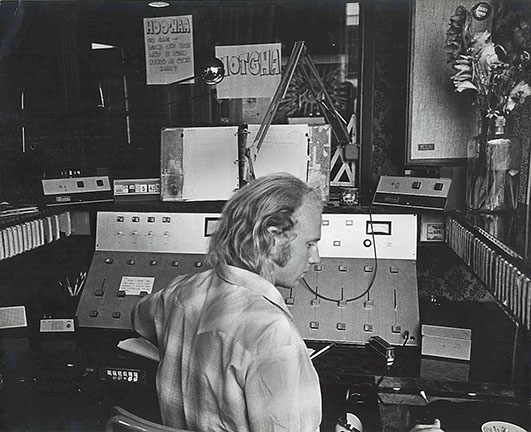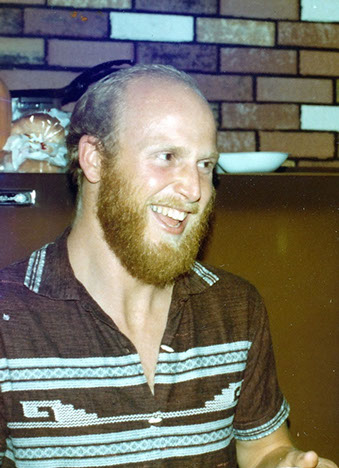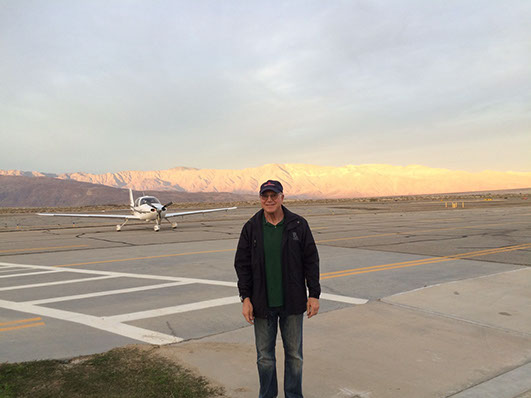


In 1968, I was looking for a summer job to tide me over until college started in the fall, where I could also meet new friends (of the female variety). A new radio sensation, featuring an already legendary O.B. Jetty was starting to infiltrate the airwaves in San Diego and a handful of other cities - the “underground” FM radio station. One of the three major pioneers of this format was San Diego’s KPRI, and I was dying to get on the air.
I hung around the station, helping out where I could, and finally convinced station owner Larry Shushan to give me a door key in exchange for a promise to find some advertisers. So, it began with wearing out the thread-bare tires on my old Volvo as I made the rounds of local merchants and sold them advertising. It was relatively easy to sell, because people were already talking about KPRI and its unusual format. Larry, the station owner encouraged me to work on the business side. “Do you really want to be like these guys?” he said, gesturing to the long-haired DJs through the window of the broadcast booth. “The money is in sales.”
Yes, I did want to be like those guys, badly. My chance came in the middle of the night when my mother sleepily knocked on my bedroom door to tell me I had a phone call. Program manager Inor Gaddum, who created his moniker by spelling his real name backwards, was on the line. “Captain Sunshine, the all-night DJ, has fallen asleep. You have a key. Get down there right now and do a show.”
I jumped in the Volvo and raced to the station. Sure enough, the good captain was snoring in a corner of the studio. I had waited for this moment for what seemed like forever, and finally I had my chance. I sat down before the microphone, remembering something I had heard DJ Acmed The Revolving say on-air, “I’ve been up on the roof checking out the weather, and the KPRI weather report for today is blue and green colors with paisley patterns, and the high will last about four hours, hours, hours (fading phony reverb).” I put the needle down on a spinning record and my radio career was launched.
My first regular show at KPRI was called "The Joyful Wisdom Hour," featuring rock artists explaining the philosophical or quasi-spiritual meanings of their songs. I got the show slot by convincing Larry and Inor (Ron) to cancel a remote broadcast from a local Catholic Church and replace it with my show each Sunday morning. In those days, the FCC required radio stations to provide weekly one-hour religious programs, but they didn't define the term, or impose any other requirements. Fortunately for me, long-haired hippie musicians discussing ideas about life (Are You Experienced?) satisfied the FCC licensing requirement. Before long I was working full-time as a KPRI radio personality. Several years at KPRI, then later at KGB and KMET in Los Angeles, which were also at the forefront of the FM radio revolution. Like all the other guys at KPRI, KGB, and KMET, I met and interviewed many well-known recording artists of the day, and emceed at rock concerts around the city.
Most of the musicians were great fun to be around. But life on the road takes its toll on any rock star. Janis Joplin, Jerry Garcia of the Grateful Dead and the Doors’ Jim Morrison were drug culture casualties, and seemed bitterly unhappy living on the road. There were a number of artists who enjoyed coming to San Diego, like Jimi Hendrix, who was gracious, friendly, and usually extended his stay for a low-profile vacation. I enjoyed most of my dealings over the years with dozens of singers and songwriters who are still popular today. Some I thought of as friends like Jimi, Dan Hicks, and Jesse Colin Young (name dropping, but so what).
I had the dubious honor of being literally tossed off the stage of the San Diego Sports Arena by Jim Morrison, who snuck up behind me in the darkness while I introduced the band. Luckily, I landed on a crowd of delirious fans, and I suffered from nothing worse than a bruised ego. In 1976, The Joyful Wisdom Hour went into syndication, thanks to Omni Magazine. We continued to feature interviews with rock stars, philosophers, scientists, and of course music. For several years, my collaborator was former Harvard Professor and counter-culture icon Dr. Timothy Leary. We pitched him to radio programmers around the country as the “LSD Jay.” His humor and celebrity created interest in our show, and it aired on 50 radio stations every week, covering the major markets.
By 1980, I was 30 years old and a veteran of the rock radio scene. I had played my role in the development of a new breed of radio entertainment, and was actually getting old by DJ standards. I decided I wanted the same things as many other people my age - a family, and financial independence.
While working in radio in the early 1970's, I had tried my hand at law school, but my heart wasn’t in it, and managed to complete a doctorate in Counseling Psychology from a small proprietary school. Hypnosis was popular therapy at the time, and I had been trained in the use of guided imagery and hypnotherapy. After working as an apprentice counselor for almost a year, I decided the field wasn’t for me.
Now back to 1980. My latest gig on KMET- FM in Los Angeles had ended. I had broken up with my girlfriend, or maybe she broke up with me. A surfing buddy of mine had a house at Wind and Sea Beach in La Jolla, and he was looking for a roommate. I figured that was as good a place as any to figure out my next move.
As it turned out, my friend had taken a job as a stockbroker trainee. The tales of finance and stock market machinations he talked about each night after work were fascinating to me.
I decided that I, too, wanted to become a stockbroker. It seemed to me at the time like a good idea, because it would allow me to achieve the goal of making money (maybe a lot of it), while still keeping a hand in radio by transforming myself from a music presenter and newsman, into a financial commentator.
I entered an apprenticeship program at Shearson ~ Lehman Brothers, and parlayed that experience - and a side job as a business reporter at a local AM radio station - into a million-dollar brokerage business by 1986. You could say that after almost two decades of grinding it out, I had become an “18-year overnight success.” Eventually, I completed an MBA at California's first State Approved distance learning college, CPU. Shortly afterwards, I was accepted into the three year Owner-President Management program at the Harvard Business School in Boston, graduating from the 26th Class of OPM in 1998. Later on, director certification from the UCLA Anderson School, and Advanced Diploma studies in Data and Systems Analysis at the University of Oxford.
I live in Rancho Santa Fe, (San Diego) California, with my wife, Diana, a clinical psychologist. Three beautiful daughters are rapidly growing up. Our old radio friend turned movie director Cameron Crowe tipped his hat by including me as the DJ figure (Alice Wisdom) in his feature film "Almost Famous." I had been helping Cameron and crew piece together elements for the radio studio scene, which included George Williams' wonderful day glow "KPRI Turn On" poster. I am especially grateful to Cameron Crowe for memorializing KPRI's unique place in history, and providing proof to my daughters that their dad really was part of that magical era.
.


